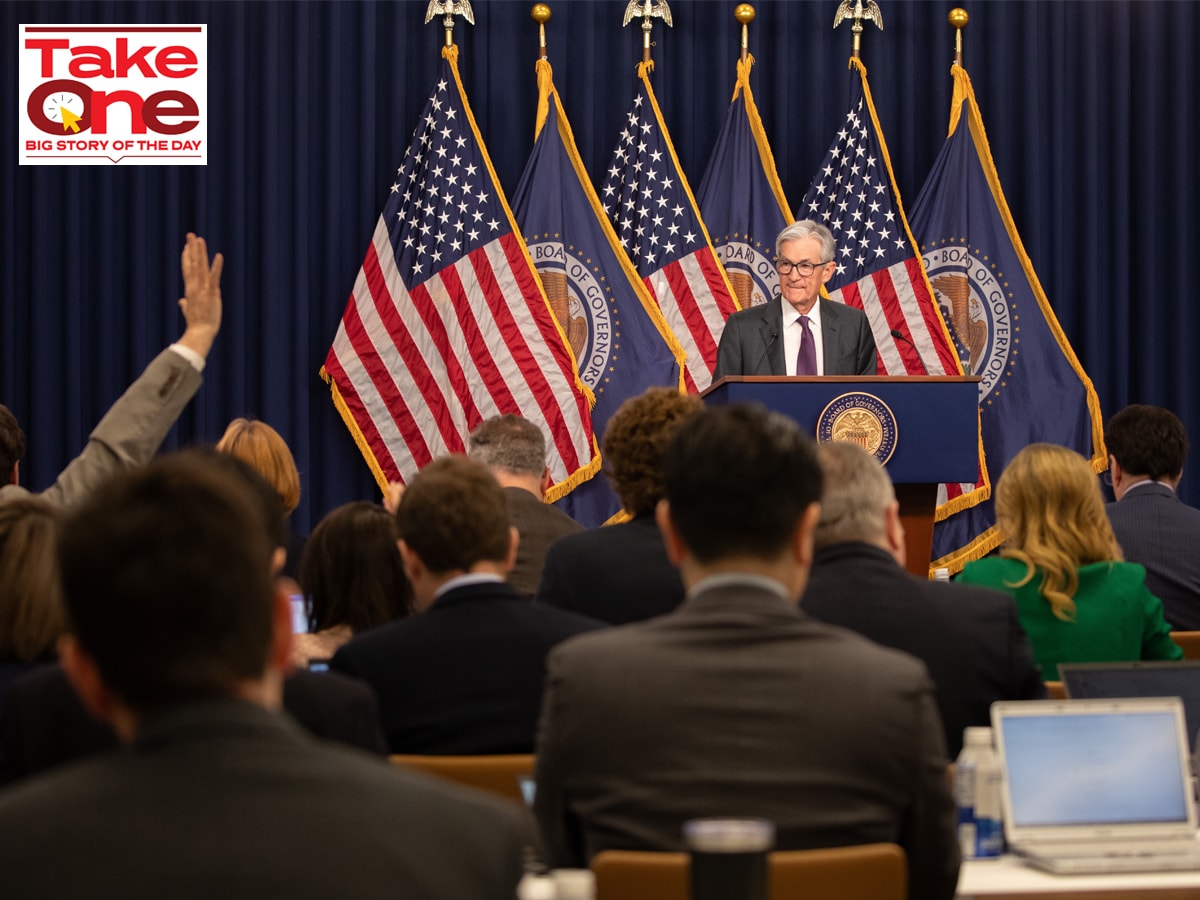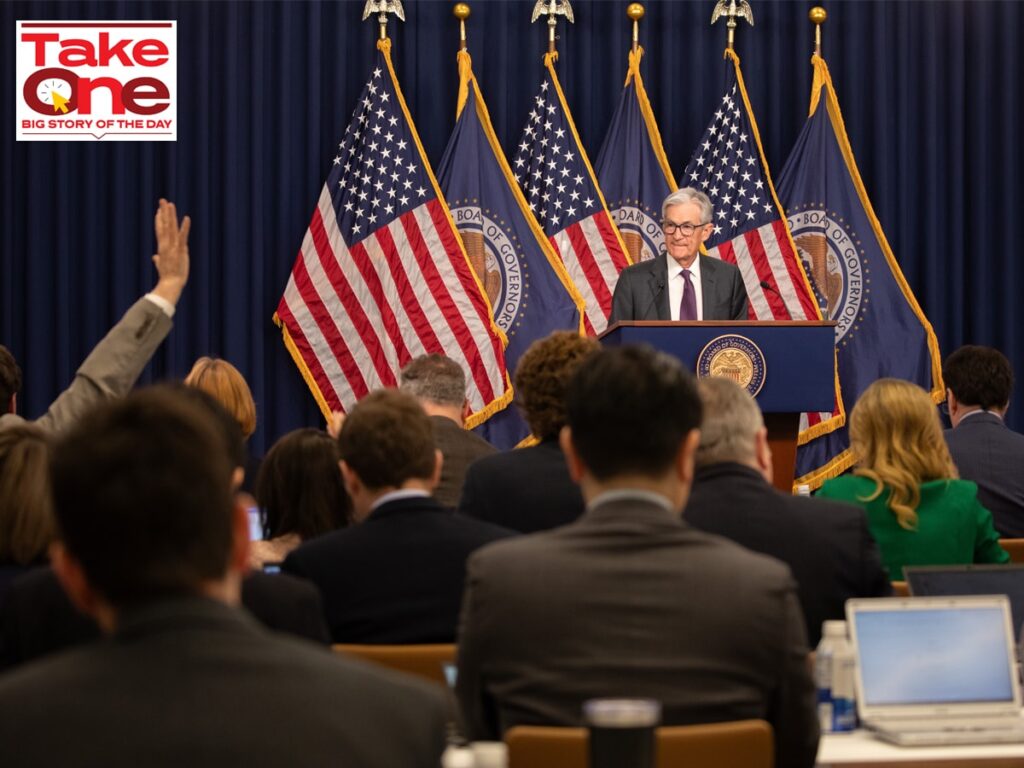Rising concerns of global economic uncertainties stemming from US tariff hikes amid inflation woes have been keeping markets worldwide on tenterhooks. In India, there is the added pressure of losing foreign liquidity as equities are facing consistent outflow of money in the last few months. Interest rate hikes by the US Federal Reserve, typically, lead to a reversal of FII (foreign institutional investors) inflows from emerging markets to developed markets, and it works in reverse too.
“We have entered a shallower rate cut cycle that continues to evolve with policies under the (Donald) Trump regime and inflation expectations which are now stickier than previously expected,” says Ankita Pathak, fund manager, global equities and macro strategist, Ionic Asset by Angel One.
According to Pathak, the policy guidance remained the same despite changing macros which are currently being perceived as positive by the investors. “The Fed’s ability to cut rates will largely depend on tariffs and their repercussions on inflation. On the domestic front, the Reserve Bank of India has started with liquidity easing and the rationale for another 25 basis points (bps) rate cut in April is compelling,” she explains.
On Thursday, markets cheered the unchanged Dot plots as the Fed now anticipates a transitory impact of tariffs—mainly on inflation.
Although the Fed decision was widely anticipated, it was the global central bank’s commentary on its own assessment of the growth and inflation dynamics, and the likely impact of the tariff policy, which was closely monitored by the markets. Fed’s projections factor in the near-term impact of the tariff policies on the economy while the term ‘transitory’, once again finds a mention in the monetary policy statement with regards to inflation. Federal Reserve Chair Jerome Powell indicated that the current policy stance is “well positioned” to tackle any development in the economy.
Powell downplayed the recent data on muted consumer sentiments and called for better clarity to warrant any policy action, a move which could risk the Fed falling behind the curve, say analysts. Powell said the Fed will be watching intently to determine how many of all those actions pass through to consumer prices, whether those levies or other countries’ retaliatory responses seem to be causing more persistent price pressures and, perhaps, most importantly, whether it all starts to feed into inflationary psychology among families and businesses, Reuters reported.
“Although the Fed highlighted that the uncertainty around tariff policies has crept into the inflation expectations, the central bank is not in a position to precisely assess the exact impact of tariffs on inflation,” says Hitesh Suvarna, analyst, JM Financial Institutional Securities. He believes that the Fed would continue to be on “wait-and-watch mode” before the actual tariff policies are implemented. Fed’s assessment of a transitory impact on inflation seems misplaced at this juncture.
Countries have been on high alert about a risky retaliatory global tariff war triggered by US President Donald Trump’s new policy. Trump has announced reciprocal tariffs on several countries, including India, which will take effect from April 2.
Also read: US Fed likely to keep rates steady as Trump uncertainty flares
Impact on India and foreign money
According to Ravi Singh, analyst Religare Broking, overall, the Fed decision has mixed implications for currency movements, capital flows and market sentiment in India. “Higher US interest rates could lead to foreign capital outflows from Indian markets, whereas lower rates may attract investment. Additionally, economic uncertainty in the US could contribute to market volatility. However, a stronger dollar may impact global commodity prices,” he explains.
Singh also feels that since India is a major oil importer, lower oil prices could benefit the Indian stock markets.
India has been struggling with regular outflows of FIIs’ money, one of the major contributors in the tanking of overall equities in India. Last month, FIIs offloaded Indian stocks worth $5.4 billion, while domestic institutional investors were net buyers of $7.4 billion, marking the 19th consecutive month of inflows.
Ashwani Dhanawat, executive director and chief investment officer, Shriram General Insurance, feels the weakened macro projections by the Fed suggest a more cautious economic outlook, which could influence monetary policy decisions moving forward.
Dhanawat adds that the Fed may be indicating that it may need to take more accommodative steps to support the economy amid lower growth expectations and rising inflation concerns. “The implications of these developments could lead to increased volatility in financial markets as investors recalibrate their strategies in response to the Fed’s evolving outlook,” he elaborates.
In India, food inflation has been a key driver of headline CPI (or retail inflation) in the last 12 months, with weather-related disruptions creating volatility. However, for FY26, the outlook for food inflation has improved as both summer and winter crop production are estimated to rise on an annual basis, which will also help to reduce volatility as it creates a buffer.
Headline inflation softened to a seven-month low at 3.6 percent year-on-year in February from 4.3 percent in January. The inflation data for January and February have moderated faster than anticipated, driven by easing food prices even as core CPI remains range-bound at benign levels. “Thus, we build in one additional rate cut by the RBI of 25 bps in June, leading to a cumulative easing of 75 bps (as opposed to our prior view of 50 bps) in the current rate easing cycle,” says Upasana Chachra, chief India economist, Morgan Stanley.
The RBI economists, in its latest March bulletin, also acknowledge that policymakers are now walking a tightrope, having to balance the upward strain of rising prices on account of tariffs and currency depreciation, as well as the downward pressure on inflation from economic slowdown.
“The stubbornness of headline inflation in advanced economies, along with a sticky core and services inflation, could act as a constraint on monetary policy being used as a tool to counteract the potential slowdown engendered by the tariff war,” says the RBI bulletin.
They add that emerging economies remain vulnerable to the contagion effects of these developments through the trade, capital flows and currency depreciation channels. Divergence in domestic macroeconomic conditions is also reflected in dissension in policy actions among central banks.
 Federal Reserve Chairman Jerome Powell speaks at a news conference after the Federal Open Market Committee (FOMC) meeting on March 19, 2025, in Washington DC, United States.
Federal Reserve Chairman Jerome Powell speaks at a news conference after the Federal Open Market Committee (FOMC) meeting on March 19, 2025, in Washington DC, United States.

